All issues

Successor
Predecessor
Volume 10, Issue 7
Displaying 1-8 of 8 articles from this issue
- |<
- <
- 1
- >
- >|
-
Eiji Fukutani, Tetsuro Akiba1961 Volume 10 Issue 7 Pages 289-292
Published: July 15, 1961
Released on J-STAGE: November 25, 2009
JOURNAL FREE ACCESSThe relation between corrosion of propeller shaft and zinc anode for cathodic protection of propeller is investigated by mathematical calculation. A summary of results is as follows:
1) At present, most of propeller shafts on steel ships are disconnected electrically by oil film in the bearing at their running state. As electric current path will be made from zinc anode to sea water-propeller-propeller shaft-sea water-stern tube-ship hull-zinc anode in such a case, the electric current leaving shaft sleeve will cause considerable corrosion of shaft sleeve. It is recommended to keep good electrical contact between shaft and hull by brush and slip ring.
2) Potential of inner surface of stern tube has much influence on the corrosion of shaft sleeve. The more negative the potential of stern tube, the lesser the corrosion of shaft sleeve.
3) Good paint coating on the interior surface of stern tube will prevent corrosion current from shaft sleeve considerablly.
4) If propeller is cathodically protected by zinc anode attached on the propeller boss, corrosion of shaft sleeve will be much reduced.
5) On wooden vessels, zinc anode should not be attached directly on the stern surface of stern tube. Otherwise corrosion of shaft sleeve will be increased if electrical resistance between brush and slip ring became larger.View full abstractDownload PDF (533K) -
Junichi Sakuma1961 Volume 10 Issue 7 Pages 293-298
Published: July 15, 1961
Released on J-STAGE: November 25, 2009
JOURNAL FREE ACCESSPrevention of (erosion) corrosion on the propeller and it's shafting was examined with a stern model and discussed the results.
In the case of running ship, protecting current to propeller (white arrow in Fig. 1) is used to be checked, and stray current (black arrow) arises in stern tube at the same time.
To prevent these troubles, several methods were ascertained. The results were as follows:
1) It is favorable for both propeller and it's shafting to make sure the connection between the intermediate shaft and bearing by the ring and brush.
2) Painting on the inner side of stern tube (especially copper alloy parts in it) would decrease the stray current mentioned above.
3) Zinc anodes attached on the boss of propeller are effective, but the effect are insufficient to the vicinity of blade tip. However, this foible is diminished by the coating on the inner half of propeller.
4) In case that cathodic protection by external anode would be used for the ship, it is favorable to connect this anode to the shafting directly, and not to the ship's hull.View full abstractDownload PDF (790K) -
[in Japanese], [in Japanese]1961 Volume 10 Issue 7 Pages 299-301
Published: July 15, 1961
Released on J-STAGE: November 25, 2009
JOURNAL FREE ACCESSDownload PDF (532K) -
[in Japanese]1961 Volume 10 Issue 7 Pages 302-303,309
Published: July 15, 1961
Released on J-STAGE: November 25, 2009
JOURNAL FREE ACCESSDownload PDF (486K) -
[in Japanese]1961 Volume 10 Issue 7 Pages 304-309
Published: July 15, 1961
Released on J-STAGE: November 25, 2009
JOURNAL FREE ACCESSDownload PDF (2227K) -
[in Japanese]1961 Volume 10 Issue 7 Pages 310-314
Published: July 15, 1961
Released on J-STAGE: November 25, 2009
JOURNAL FREE ACCESSDownload PDF (701K) -
International Nickel Co., [in Japanese]1961 Volume 10 Issue 7 Pages 315-319,321
Published: July 15, 1961
Released on J-STAGE: November 25, 2009
JOURNAL FREE ACCESSDownload PDF (1056K) -
[in Japanese]1961 Volume 10 Issue 7 Pages 320-321
Published: July 15, 1961
Released on J-STAGE: November 25, 2009
JOURNAL FREE ACCESSDownload PDF (310K)
- |<
- <
- 1
- >
- >|